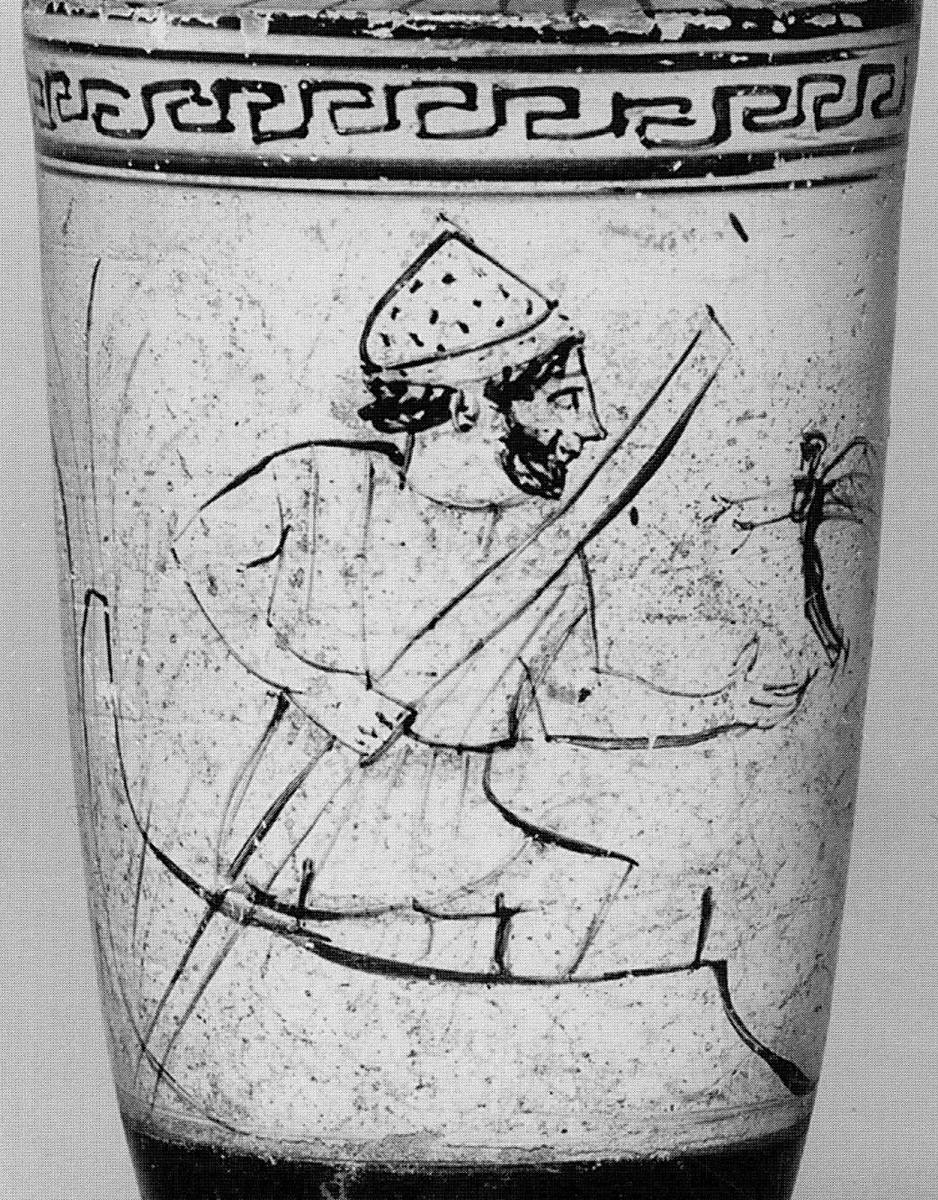“Features of the Ferryman: Identifying Charon on Red-figure Loutrophoros Fragments from the Sanctuary of the Nymphs”
Renee Gondek, PhD

White ground lekythos attributed to the Tymbos Painter, ca. 460 BC. Oxford, Ashmolean Museum G258.
Known as the “Ancient Mariner” or the “Ferryman of the Dead,” the Greek origin of Charon is shrouded in mystery. Probably introduced to the Hellenistic world from Egypt or the Near East, this semi-divine being has no Greek genealogical connections and, since he occupies an area between the land of the living and that of the dead, he is interpreted as a marginal being. Although there are several ancient literary sources that mention him, he is mostly known to modern scholars from fifth century BC Athenian vase-paintings. Escorting the souls to their afterlife in the Underworld, Charon is depicted in a boat wearing a rustic hat, beard, and chitoniskos. Outside of these attributes, one can often identify him through his interaction with “souls”—either minute, winged eidola or those illustrated as normal human figures standing in his vessel.
“Features of the Ferryman” investigates the overall representation of this demonic figure and his appearance on a red-figure loutrophoros fragment from the Sanctuary of the Nymphs. As a majority of his depictions are on white ground lekythoi deposited in funerary contexts, this presentation explores the significance of both his portrayal on this particular vessel shape and the sherd’s findspot on the Athenian Acropolis.
A former alumna of the University of Pittsburgh and the HAA Department, Renee Gondek is a Classical art historian and archaeologist. She specializes in Athenian vase-painting, ancient Greek nuptial and funerary ceremonies, and depictions of gender. Currently, she researches at the Center for Hellenic Studies in Washington D.C. and teaches at George Washington University.
